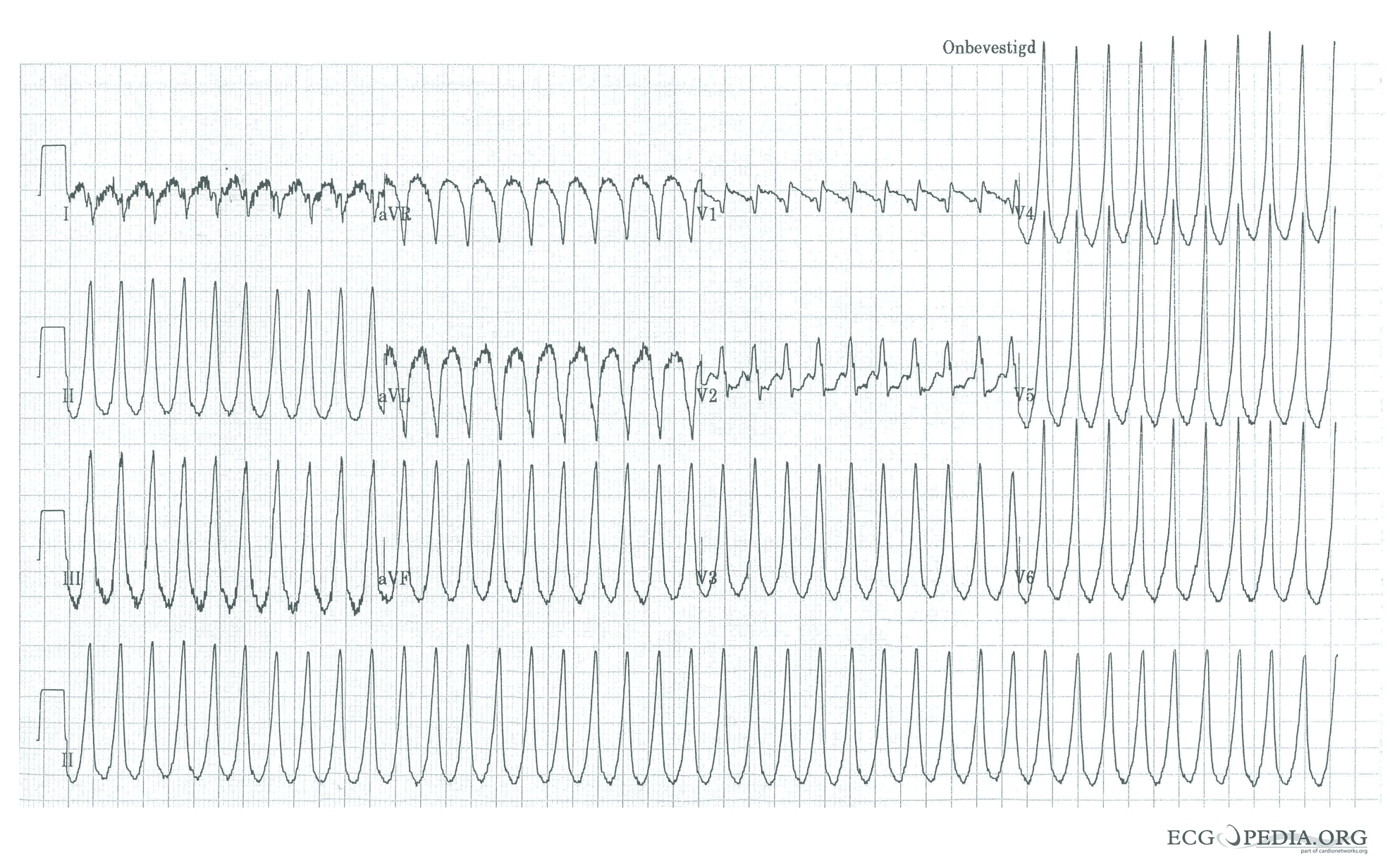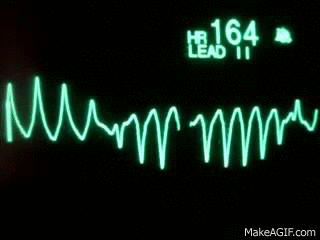Updated on February 26, 2025
The ventricles are supposed to receive impulses from SA node similar to atria and beat at a rate equivalent to atrial rate. But sometimes, ventricles start to contract at a much rapid rate resulting in wide QRS complexes on ECG, termed as VT – Ventricular tachycardia.
When the QRS complexes seen on ECG have identical morphology (appearance) to each other, we call it Monomorphic Ventricular tachycardia. (image-source:ecgpedia.org)
If the QRS complexes of VT have different morphologies to one another, we call it Polymorphic ventricular tachycardia.
This is one of the types in polymorphic VT. But the factor that differentiates it is, there will be alternating electrical axis. One batch of waves will have a predominantly positive waves and the next few waves will be negative. Such alternating / undulating pattern helps you identify Torsades de pointes. Please have a look at the GIF below.

If the tachycardia has origin at or above AV node, the QRS complex will be narrow (less than 0.12 seconds – 3 small boxes). If the origin is below AV node, the QRS will be wide. The heart rate will be more than 100.
VT can be slow or fast depending on heart rates of around 100-140 or 140-200. The numbers are just for an idea. Managing VT will be discussed as part of Tachyarrythmia discussion in coming up lesson.